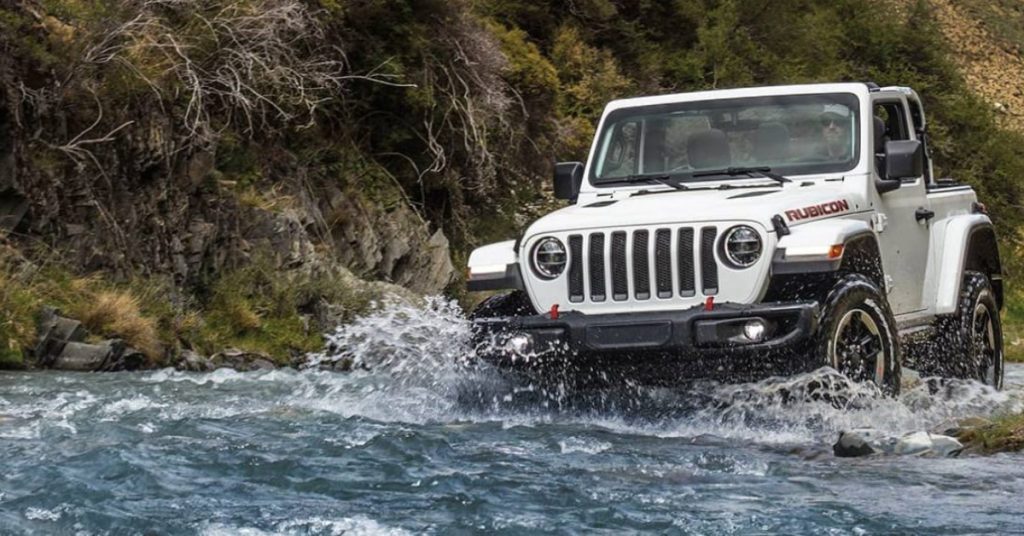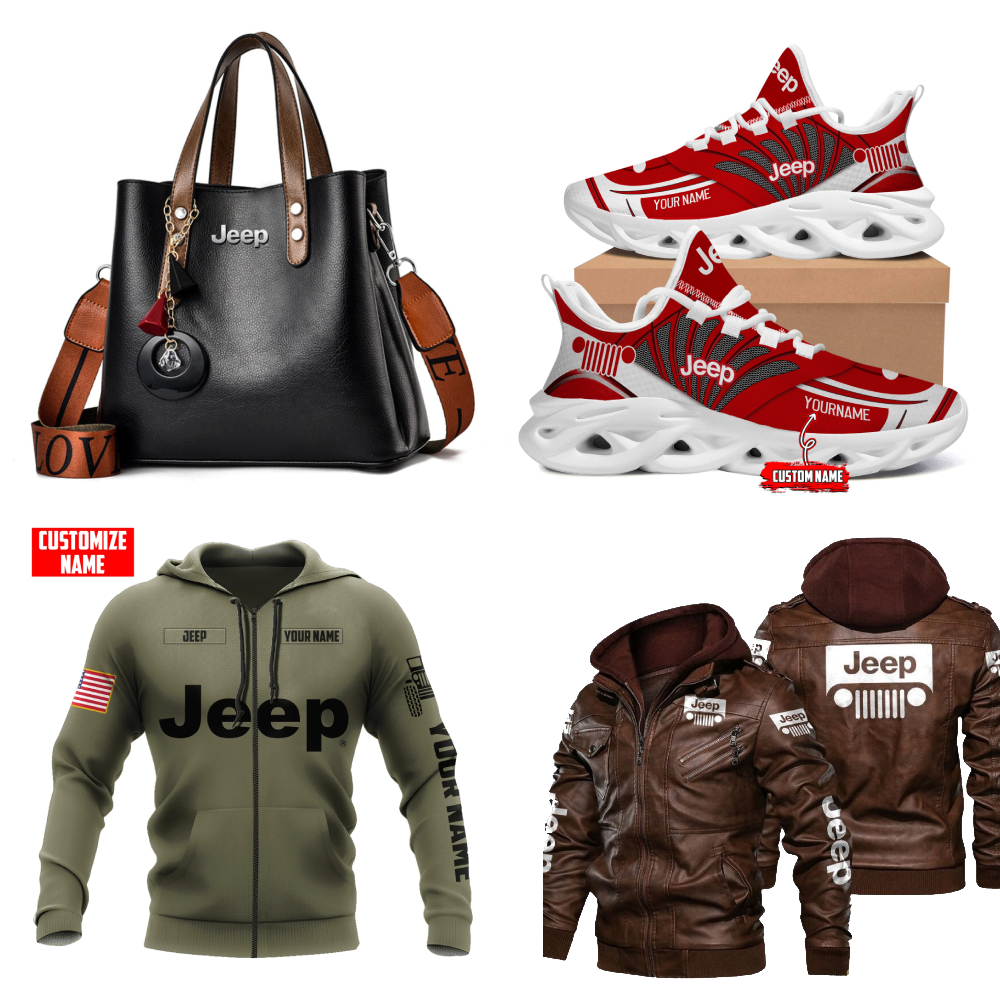Blog
Are Jeep Wranglers Good on Gas? Ways to Improve Fuel Economy
When deciding which car to buy, fuel economy is a very important factor. It tells you how much money you will need to put into your car on a regular basis and helps you compare its overall price to the price of other cars. Most of the time, the more miles per gallon a car gets, the less money you’ll spend on gas.
On average, a Jeep Wrangler can travel between 17 and 29 miles per gallon. In the city, the 2021 Jeep Wrangler gets 22 miles per gallon, and on the highway, it gets 29 miles per gallon. The fuel rating of a Jeep Wrangler depends on its engine, make, and model.
What is gas mileage?
Gas mileage is the number of miles a car can go on a certain amount of gas. We measure it in Miles Per Gallon (MPG), which is how far a car can go on one gallon of gas. The more miles per gallon (MPG) a car gets, the less fuel it uses and the less it costs to drive. The U.S. Environmental Protection Agency (EPA) divides MPG into Highway MPG, which is the average number of miles driven at higher speeds on the highway, City MPG, which is the average number of miles driven in stop-and-go city traffic, and EPA Combined City/Hwy MPG (which averages Highway and City ratings). The EPA also keeps track of how much energy electric and hybrid vehicles use and figures out their equivalent MPG. This lets you compare vehicles that use different types of fuel.
How many miles per gallon does a Jeep Wrangler get on average?
The Jeep Wrangler gets pretty good gas mileage for an SUV that can go off-road. According to www.fueleconomy.gov, the Jeep Wrangler Unlimited Sport with four doors and an automatic transmission gets 19 MPG in the city, 24 MPG on the highway, and 21 MPG overall. This has a 3.6-liter V6 engine with 285 horsepower, 260 lb-ft of torque, and stop/start technology. By upgrading to an eTorque mild-hybrid system, you can get better gas mileage for not much more money. If you choose a two-door Wrangler, you will get one more MPG in the city. You can also choose a 2.0L turbocharged four-cylinder engine and an eight-speed automatic transmission, which will get you 22 MPG combined. If you drive a lot on the highway, you can get the 3.0-liter turbodiesel V6 with 260 horsepower, 442 lb-ft of torque, and automatic transmission, which gets 22/29/25 MPG.

The 4xe, which is Jeep’s first plug-in hybrid and can go 21 miles on electricity alone, gets 49 MPGe and is the most fuel-efficient Wrangler (miles per gallon equivalent). The Rubicon 392 is the worst because it has a powerful 6.4-liter V8 engine with 470 horsepower and 470 lb-ft of torque, which is a lot of power. This off-road monster gets 13 MPG in the city, 17 MPG on the highway, and 14 MPG overall.
If you compare the Wrangler to other SUVs, its ratings might not seem that great. The new Ford Bronco Four-Door Outer Banks gets 21/20/22 MPG, the 2021 Chevy Blazer gets 22/29/25 MPG, and the 2021 Four Runner gets 16/19/17 MPG. So, the Jeep Wrangler doesn’t get the best gas mileage, but all of its models work well (except maybe the Rubicon, but we love it for other reasons, right?)
How big is a Jeep Wrangler’s gas tank?
Between 1996 and 2006, Jeep Wranglers were made with 19-gallon gas tanks (71.9 liters). When it comes to two-door Jeep Wranglers made between 2006 and 2018, the fuel tank holds 18.6 gallons (70 liters). The tank size for cars with four doors is 22.5 gallons (85 liters). From 2018 on, Jeep Wranglers with two doors have fuel tanks that hold 17.5 gallons (66 liters) and those with four doors hold 21.5 gallons (81 liters). The 3.0L diesel engine has an 18.3-gallon fuel tank (69 liters).
What affects the gas mileage of a Jeep Wrangler?
The funny thing is that Jeep Wranglers don’t get very good gas mileage because of the things that people love about them, like their iconic look and strong, go-anywhere frame. Its smooth but boxy exterior makes it harder for the wind to flow around its body, which makes it less aerodynamic. This changes its average gas mileage in the real world, especially when it comes to highway gas mileage. The steel-framed Wrangler is a heavy vehicle that can go anywhere. A 2022 Sport Unlimited weighs about 4,167 pounds on average. This weight makes the ship safer and more stable, but it costs more to move.
Ways to Improve Fuel Economy
There are a few different things you can do to make your Wrangler use less gas. First, you need to keep your engine in good shape. Some Jeep owners say that sea foaming the engine will clean up the carbon intake and make the engine run better.
You should also check the engine regularly to make sure it is clean and running well. This means changing the oil, putting in new spark plugs and wires, and filling up the transmission fluid. You should also make sure the tires have the right amount of air in them.
The next step would be to add a throttle response controller as an upgrade. In a Jeep Wrangler, the throttle body controls how much air goes into the engine. By putting in a throttle body controller, the Jeep Wrangler’s throttle systems will no longer be slow. This will help your engine use less gas because it will cool down faster. When the engine does get too hot, the car slows down and uses a lot of gas. But when the engine throttle system and ECU (Engine Control Unit) work better together, the cooling process speeds up and then saves more gas.
Taking care of a Jeep Wrangler’s air filter is another way to help it get better gas mileage. You might want to add a depth-based high-flow filter to increase the flow of air into your engine’s combustion systems.
Also, think about not putting on any off-road tires that are too big. Of course, one of the benefits of having off-road mud tires on your Jeep Wrangler is that you can drive through any muddy or rocky terrain. In reality, though, these additions make your gas mileage worse.
If fuel economy is something that is important to you, you might consider sticking with lighter-grade highway tires. When buying a Jeep, tires are a big thing to think about. Off-roading is one of the main things people use Jeeps for. So, if you don’t want to spend the extra money on gas because the Jeep Wrangler gets bad gas mileage, it might not be a good choice for you.
Your Jeep’s gas mileage could also be affected by the tops you use. To get better gas mileage, you should take off racks. Overall, you will get better gas mileage in a Jeep Wrangler if you don’t carry as much stuff with you. The more weight you carry, the more often you’ll have to stop at a gas station to fill up.

Good driving habits are also important. A Jeep Wrangler is not the best car to drive in the city because traffic and stoplights make it common for cars to idle. When you’re not driving, you should turn off your car’s engine. The best thing to do is keep your speed between 55 and 65 miles per hour. This will save you money on gas.
Besides, you can also check out our Jeep apparel collection here >>
Gasoline Requirements
Reformulated Gasoline: Compared to regular gasoline, reformulated gasoline is made to have less pollution and better air quality. In some parts of the United States, you have to use specific gasoline. When it comes to the Jeep Wrangler, Jeep says to use reformulated gas whenever it is available.
Oxygenated Blends Or E-85: DO NOT use E-85 gasoline with methanol or E-15 gasoline with more than 15% ethanol in it. If you use these blends, your car might have trouble starting or driving, damage important parts of the fuel system, release more pollution than the law allows, or turn on the Malfunction Indicator Light. Please pay attention to pump labels, which should tell you if a fuel has more than 15% ethanol (E-15).
Gasoline by MMT: Some types of gasoline have MMT added to them to make the octane level higher. Jeep says that using gasoline with MMT doesn’t make the car run better than using gasoline with the same octane level. Also, adding MMT makes the spark plugs last less long and makes the emission system less effective. Lastly, MMT is against the law in both the United States and California.
Fuel With Added Materials: The TOP TIER certification is given to some gasoline sold in the United States. This means that the gas has things added to it. These additives will help save money on gas, cut down on pollution, and keep the vehicle running well. Jeep says that you should always use this gas in your Wrangler if it is available. Go to toptiergas.com to find a gas station near you.
CNG And LP Fuel System Modifications: Most likely, if you change the Jeep Wrangler to use CNG or LP fuel, you will damage the engine’s internal parts and other mechanical parts. Jeep does not recommend that you make these changes, and if you do, your warranty will be void.
Diesel Requirements: As was already said, Jeep Wranglers made after 2020 can also come with a 3.0L V6 diesel engine. If your Wrangler has this engine, the paragraphs that follow will tell you in detail what kind of fuel to use.

In order to protect the emissions control system, federal law says that you can only put Ultra Low Sulfur Highway Diesel fuel (15 ppm Sulfur maximum) in your Jeep Wrangler. Low Sulfur Highway Diesel fuel (500 ppm Sulfur maximum) can’t be used. No. 2 diesel fuel that meets the ASTM (formerly the American Society for Testing and Materials) D-975 Grade S15 specification will work well for most services all year round.
If the vehicle is exposed to extreme cold (below 20°F or -7°C) or has to run in colder-than-normal conditions for a long time, use climatized No. 2 diesel fuel or mix 50% No. 1 diesel fuel with the No. 2 diesel fuel. This will protect the fuel filters better from getting gummed up or clogged with wax. No. 1 Ultra Low Sulfur diesel fuel should only be used in places where the temperature stays below -10°F or -23°C for a long time.
Biodiesel: Your diesel engine should only use a maximum of 5% biodiesel that meets ASTM specification D975. If you want to use Biodiesel blends between 6% and 20% (B6–B20) often, you may have to do maintenance more often. If you run your engine on more than 5% biodiesel, you will need to change the oil and filter more often and replace the fuel filter. Do not use more than 20% biodiesel. For regular use of biodiesel blends between 6% and 20% (B6–B20) (B6–B20). You must understand these rules and follow them. When using biodiesel blends of more than 5%, the oil should never go more than 8,000 miles (12,875 km) or six months without being changed (B5). The owner has to keep track of the mileage when using B6-B20 biodiesel because the automatic oil change system doesn’t show that biofuels are being used. Every other time the oil is changed, the fuel filter is changed. This is very important when using biodiesel.
What if the Wrangler sounds like it’s knocking?
If the engine is running on gasoline with an octane number of 87, a slight knocking sound is not something to worry about. But if the engine is making a loud knocking sound, you should go to your dealer right away. If you use gas with an octane number lower than 87, your engine could break down, and the New Vehicle Limited Warranty may be void or not cover the damage. Bad gasoline can make it hard to start the car, cause it to stall, or make it hesitate. If your car has these problems, try a different brand of gas before taking it to a mechanic.
Learn more about how to find Jeep easter eggs on your Jeep Wrangler >>


